






BLOWING ROCK — The Blowing Rock Chamber of Commerce has announced the return of its Spring Home Show to the Blowing Rock American Legion on May 22 from 10 a.m. to 6 p.m.
This event, presented by Peak Sanitation, will showcase the latest in residential home services, providing inspiration and resources for homeowners and home builders.
The Spring Home Show will feature a wide array of exhibitors, including local businesses and national brands, offering everything from interior design and landscaping to home improvement and living solutions. Attendees will interact with industry experts and explore innovative products and ideas to enhance their living spaces.
The chamber is excited to return the Spring Home Show to Blowing Rock. Last year’s event was a “tremendous
success,” and the Chamber looks forward to continuing this tradition and supporting the local community.
As of publication, the following businesses will be at the event:
• 4 Forty-Four
• A-1 Termite & Pest Control
• Alair Homes High Country
• Bearicade Bin
• Bent Tree Furniture
• Blowing Rock Furniture Gallery
• Boone Home Watch
• Clean & Dry Environmental Solutions
• Craftsman Cabinets & Furniture
• Edmisten Heating & Cooling, Inc.
• ERX Emergency Restoration Xperts
• High Country Helpers
• High Country Professional Cleaners
• High Shine Services
• Home Girl / At Home



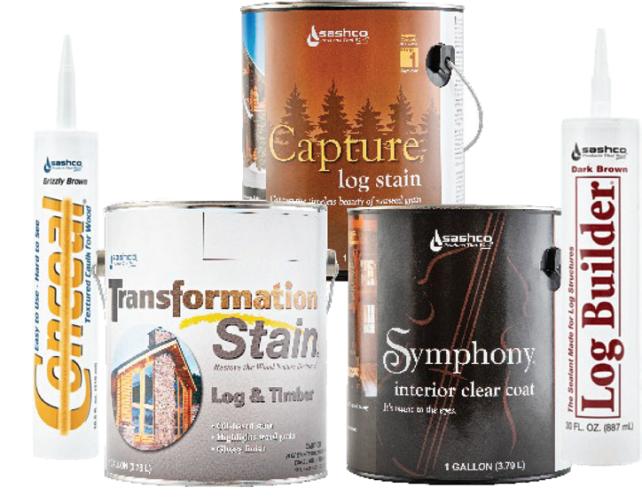

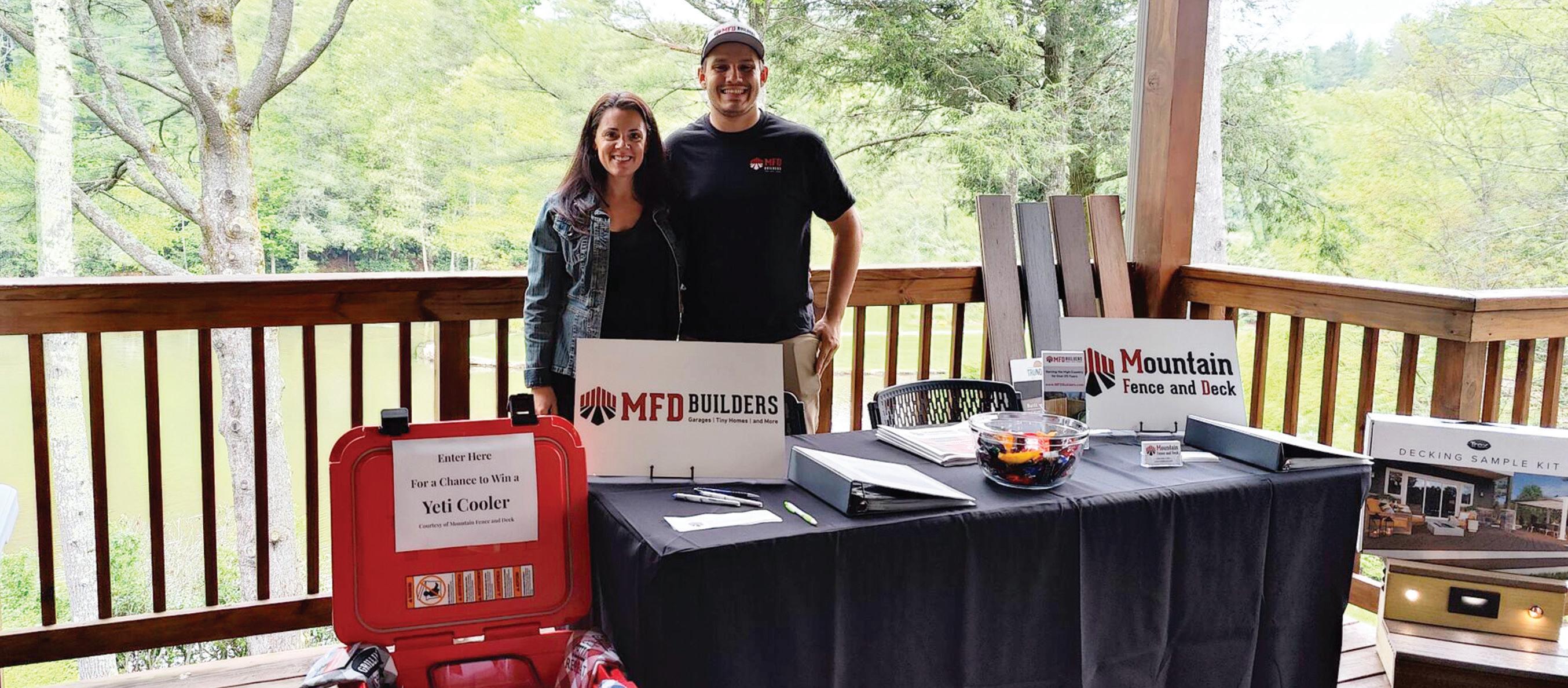
BY
Mountain Fence and Deck
In Blowing Rock
• Jared Munday Electric
• Long Dog Lawn Care
• MBA Roofing
• Mountain Fence and Deck Co, LLC
• Mountain View Sound & Video
• Mountain Vista Window Washing
• Oxi Fresh Carpet Cleaning
• Peak Sanitation (Sponsor)
• Roof Maxx
• SERVPRO
• Spangler Restoration
• STITCH Designs
• Stone Interiors
• Trujillo Painting Services
• Two Hoots Home Staging For more information, visit www. blowingrockncchamber.com.









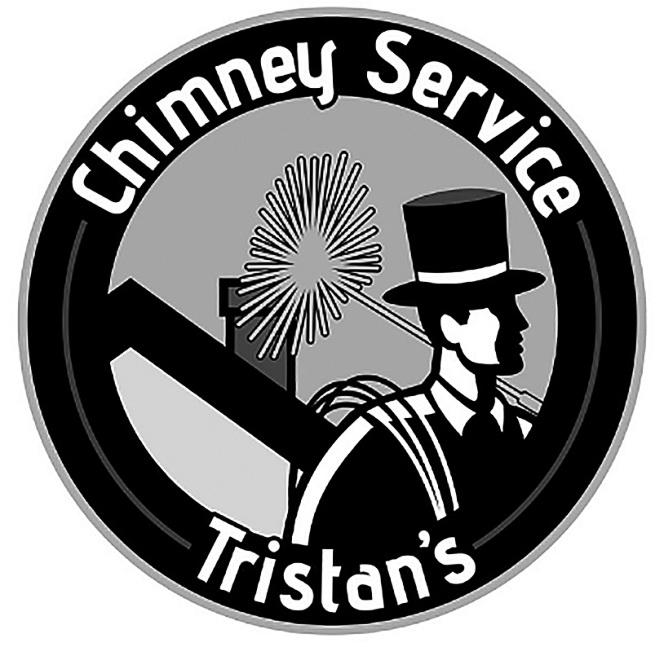
“Kee pThe Home FireBur ning” Licensed &Insured
ChimneyWater Proofing •ChimneyCapsand Cha ses Video Inspec tion •Masonry Repairs •Wood Stove Sales
Office: 828-688-0405
www.tristanschimneyser vice.com
email: office@tristanschimneyser vice.com









BY MOSS BRENNAN
In the High Country, cold winters and warm summers make area homeowners always seeking ways to save money on their monthly energy bills.
Blue Ridge Energy, which serves residents of Alleghany, Ashe, Avery Burke, Caldwell, Catawba, and Watauga counties, offers several ideas and steps for lowering heating and cooling costs.
First, home residents can make small changes in everyday life to conserve energy and save a few bucks. BRE offers several suggestions for year-round savings, including:
• Wash clothes in cold water when possible and save approximately $63 per year.
• Take advantage of the sunny days of winter by opening your drapes during the day and closing them at night to naturally heat the home. In the summer months, overworking a heat pump or air conditioning unit can be prevented by keeping drapes closed during the day to allow less sunlight and heat in.
• Install a programmable thermostat to save up to 10% on cooling and heating costs.
• In the bathroom, BRE suggests taking short showers rather than full tub baths. A normal tub bath will use up to twice as much hot water. You’ll save on total water consumption as well.
• Rather than using the conventional oven, the microwave oven reduces energy consumption and cooks food about one-fourth the time. Additionally, if the kitchen oven is used for cooking, it is recommended that several dishes be baked at equal temperatures together in the oven.
• Well pumps average around 50 kWh per month. However, a faulty check valve, pressure switch, or leaks in lines can quickly double the electrical
usage, so it is suggested to check the equipment on a regular basis.
• Change to new and improved light bulbs. Reduce energy use from about a third to as much as 80% with today’s increasing number of energy-efficient halogen incandescents, CFLs and LEDs.
• Clean or change filters regularly. A dirty furnace or A/C filter will slow down airflow and make the system work harder to keep you warm or cool.
• Schedule service for your heating system. Find out what maintenance is required to keep your heating system operating efficiently.
• Seal air leaks and properly insulate to save up to 20% on heating and cooling bills while also increasing home comfort.
These are just a few of more than 100 energy saving tops BRE offers. To view the full list, visit https://www. blueridgeenergy.com/resources/101easy-ways-to-save-energy-and-money. You can even sign up for their energy efficiency newsletter, which sends monthly energy management tips. For even more energy saving tips, visit App State’s New River Light and Power’s website at nrlp.appstate.edu/ resources/savings/100-ways.
In the cold High Country winters, bills can skyrocket. The following are tips specific to save money in the colder months:
• Lower your thermostat: Keeping thermostats set to the lowest comfortable setting can make a positive impact on winter bills. When temperatures drop, heating systems work overtime to heat your home. Lowering thermostats can decrease the work load for your heating system.
• Find and fix air leaks: Caulk and seal any area that may be leaking your home’s heat outside. Consider using

tools like foam gaskets behind outlet covers, draft stoppers around doors and caulk around windows or any wiring or plumbing to reduce heating loss in areas that have a draft.
• Change filters: Change air filters regularly. A dirty furnace or A/C filter will slow down air flow and make the system work harder, which uses more energy and drives up energy costs, to keep you warm.
• Check your heating system: Schedule service for your heating system. Find out what maintenance is required to keep your heating system operating efficiently.
• Take advantage of usage tools: Usage Tracker is a free tool for Blue Ridge Energy members that shows your daily electricity usage and the impacts of weather temperatures. It’s available under My Account at www. BlueRidgeEnergy.com or through the Blue Ridge mobile app.
In the summer, the U.S. Department of Energy has the following tips to keep costs down:
• Install window coverings to prevent heat gain through your windows during the day.
• Set your thermostat at a comfortable temperature that provides humidity control if needed. The smaller the difference between indoor and outdoor temperatures, the lower your cooling bill will be.
• Avoid setting your thermostat at a colder setting than normal when first turning on your air conditioner. It won’t cool your home any faster and could result in excessive cooling and unnecessary expense.
• Turn off ceiling fans when you leave the room. Remember that fans cool people, not rooms, by creating a wind chill effect.
• When you shower or take a bath, use the bathroom fan to remove heat and humidity from your home. Your laundry room might also benefit from spot ventilation. Make sure bathroom and kitchen fans are vented to the outside.
• For maximum energy affordability, schedule regular maintenance for your cooling equipment.
• Avoid placing lamps or TV sets near your room’s air-conditioning thermostat. The thermostat senses heat from these appliances, which can cause the air conditioner to run longer than necessary.
• Vacuum your air intake vents regularly to remove dust buildup. Ensure that furniture and other objects are not blocking the airflow through your registers.
• Keep your house warmer than normal when away, and lower the thermostat setting when you return home and need cooling. A programmable thermostat allows you to do this automatically without sacrificing comfort.
Visit https://www.energy.gov/ energysaver/spring-and-summerenergy-saving-tips for the full list of tips.
BY JERRY SNOW
Keeping the lawn well-groomed is often a labor of love for homeowners. A maintained yard is a source of pride.
Whether you do it yourself or hire a lawn service, taking care of your lawn can give the yard a fresh look when family or friends are coming to visit.
A lawn service can handle erosion, plant shrubs, trees, and flowers, irrigate, and build retaining walls. Bring in a professional for the best results.
The goal is to have lush, vibrant, dense grass.
To achieve the turf look you want,
forthe food on our table, the clothesonour backs and the FARMERSwho make it all happen!
experiment with different strains that complement the existing grass. A bare spot or brown patch can be overcome with persistence. When putting down grass seed, cover it with a light layer of straw, which helps hold in the moisture and discourages birds from feeding on the seeds before they germinate, according to lawnstarter.com.
The Smithsonian National Museum of Natural History reports nearly 12,000 species of grass in the United States; about 360 species are suited for growing in the mountains/foothills of North Carolina, according to the N.C. State

Whether you’realarge or small farmer,weappreciatethe business youdo with us andyour hard work growing the crops for our families.
WE OFFER
Acompletelumber warehouse with both treatedand untreatedwood produc ts. Topgrade anysizeyou need forbarnbuilding and repair. We also stock topgrade metal roofing cut to the sizeyou order, multiple colors available
NEED TO PAINT AFENCE, BARN OR YOUR HOME?
Parker Tieisthe #1 Orgill Valspar Dealer in the nation. We have the paint, stains,supplies and exper tise to assist youwith anypaintprojec t.


A well-manicured lawn, like this one by Long Dog Lawn Care, can transform a yard, as
this before and after photo.
Extension.
Tall fescue, Kentucky bluegrass, fine fescues, and perennial ryegrass are coolseason grasses best used for mountain lawns. Cool-season grasses remain green for most of the winter, according to the N.C. Cooperative Extension.
Blend multiple types of cool-season
grass for a healthy yard.
Tall fescue is a year-round grass that does well in the western N.C. mountains. It can handle a lot of sun or medium shade. This grass should be dense, but if there is a bare spot, scatter
CONTINUED ON PAGE 8

another mountain-friendly type of grass.
According to the N.C. State Extension, planting a blend of two or three cultivars is recommended. This gives the turf a better chance of withstanding winter weather challenges and summer droughts.
Keep tall fescue at a height between 2.5 to 3.5 inches for best results.
Kentucky bluegrass is another popular option in the mountains. It does better when blended with two or three types of cool-weather grass seed and should be kept about 2 inches high.
Fine fescue is also a cool-weather grass that is tolerant of shade. The extension recommends mixing fine fescue seed with Kentucky bluegrass.
Perennial Ryegrass and Kentucky bluegrass complement each other, as well.
The best time to plant cool-weather grass is in the spring or the fall.
Lawnlove, which is in the lawn service business, reports, “Cool-season cultivars grow best during spring and fall when the temperatures hover around 60 to 75
degrees Fahrenheit. Those are the best times to plant grass seed here.”
Kentucky bluegrass is considered a hardy, dense, durable grass. According to Lawnlove, it is one of the most popular types of grass in Western North Carolina. It prefers sunlight but can endure the shade. Tall fescue is often mixed with Kentucky bluegrass.
Growing conditions can vary depending on altitude. The amount of rain and sunshine is also a factor that determines the grass that works best for your lawn.
Native grasses of the region include Big Bluestem, Bushy Bluestem, Splitbeard Bluestem and Broom Sedge.
Manage the grass that is native to your property, and find strains that are complementary to it.
A healthy, dense yard should crowd out weeds.
Cutting the yard too short, less than 2 inches, can damage the roots. Keeping the blade at 3 to 3.5 inches high will mean mowing more often, but it helps the roots grow deeper. Leave the grass


clippings, because they put nutrients back into the soil, according to the N.C. State Extension. If your yard needs to be watered, do it in the morning to give it time to dry out during the day.
A slope in the yard can be difficult to maintain and is more than likely to erode in heavy rain. Giving in to that part of the yard could be the best strategy.
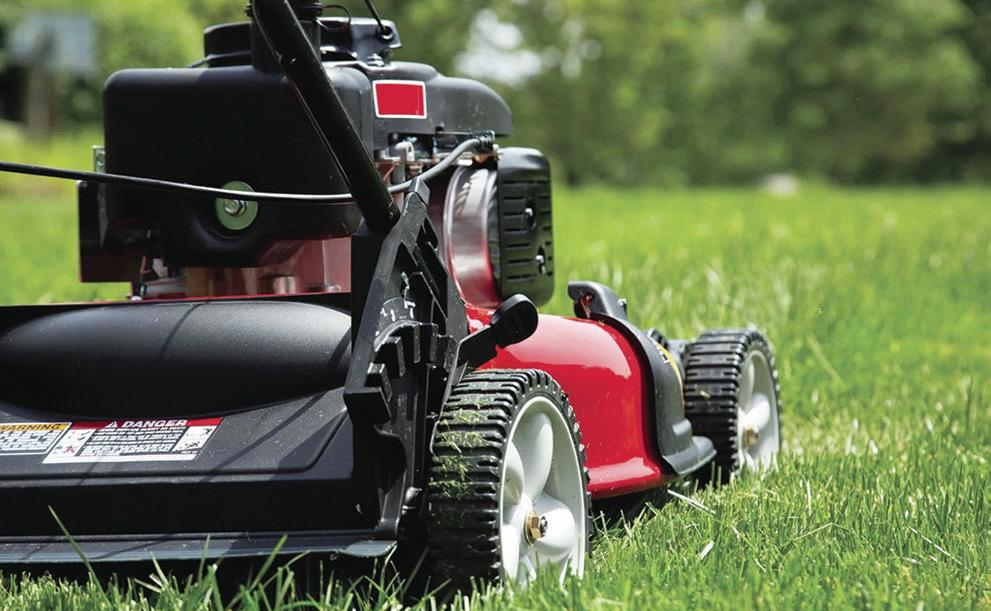
Shrubs, plants, stones, and mulch can revive an unsightly slope in the yard; a drain system could be in order.
If the yard needs to be fertilized, look for “natural” or “organic” on the label.
The Organic Materials Review Institute (OMRI) is an independent company that reviews products and determines if the ingredients are organic. Espoma’s products are safe for dogs,
kids, and the environment, according to earth911.com.
Organic lawn food and fertilizer are a safe way to give your grass its best chance.
Keeping a top-tier lawn is a commitment, but it’s also rewarding. There are many local lawn care companies in the High Country, including Long Dog Lawn Care. More information on them can be found at longdoglawncare.com.







































































































BY JERRY SNOW
The thought of a home renovation is exciting, but it might cost more than you expect.
Homeowners can save up to thousands of dollars by painting, replacing the mailbox or putting down a new floor.
However, you should hire a licensed professional for any major renovation, including plumbing, electrical or structural work.
According to local business Greene Construction, choosing the right contractor may be the most important decision you make on a construction project. Visit greeneconstructionnc. com/ to learn more about what the company has to offer.
A renovation should make a house a more pleasant place to live, but thinking it will add value to the house—because a television show made it look like easy money—is unrealistic. Chances are, a renovation will not increase a home’s resale value.
Getting on the calendar of an established general contractor might take longer than usual. Contractors in the High Country are still trying to catch up to all the work created in the fall of 2024 when Hurricane Helene left a path of destruction through the High Country.
Inspect the home every spring for moisture damage that can go undetected during the winter.
Putting off a repair usually leads to a more significant, more expensive problem. So, make sure any maintenance is done before undergoing a renovation.
Landlord Studios recommends
never spending more than 30% of the property’s market value on renovations.
Anyone who wants a major renovation should work with an architect or designer. Make sure the contractor itemizes the cost of materials and labor in an estimate and gets multiple estimates. A contingency plan should be discussed ahead of time in case unanticipated expenses or delays slow down the process or drive up the cost.
Some renovations require permits, and an electrician, mason, or plumber might need to be subcontracted. An inspector will determine if the work is up to code.
According to bankrate.com, remodeling the kitchen yields the highest return on investment for a home, and bathrooms rank second.
Remodeling Magazine reports that a major upscale kitchen renovation will return less than half the cost when the home is sold. So the magazine recommends a mid-range kitchen or bathroom renovation; a mid-range kitchen renovation can recover about 85% of its cost when the house is sold.
At least a dozen licensed general contractors serving Watauga, Avery, and Ashe counties are accredited by the Better Business Bureau (BBB).
Contractors who have been in business for decades and have a good reputation for standing behind their work; finishing a job on budget and on time is a reasonable expectation.
It often costs more to hire an established contractor and might take some time to get started, but an

The Lovill House Inn was originally built in 1875, but O2 Group Ventures worked
it to its former glory and beyond by preserving its historical
sustainable technology.
accredited home contractor tends to be more trustworthy.
According to Carrie Hamblin on HGTV’s website, finishing the
basement is probably the least expensive way to add more living space—like a bedroom or home office —if the idea is to add more living space.
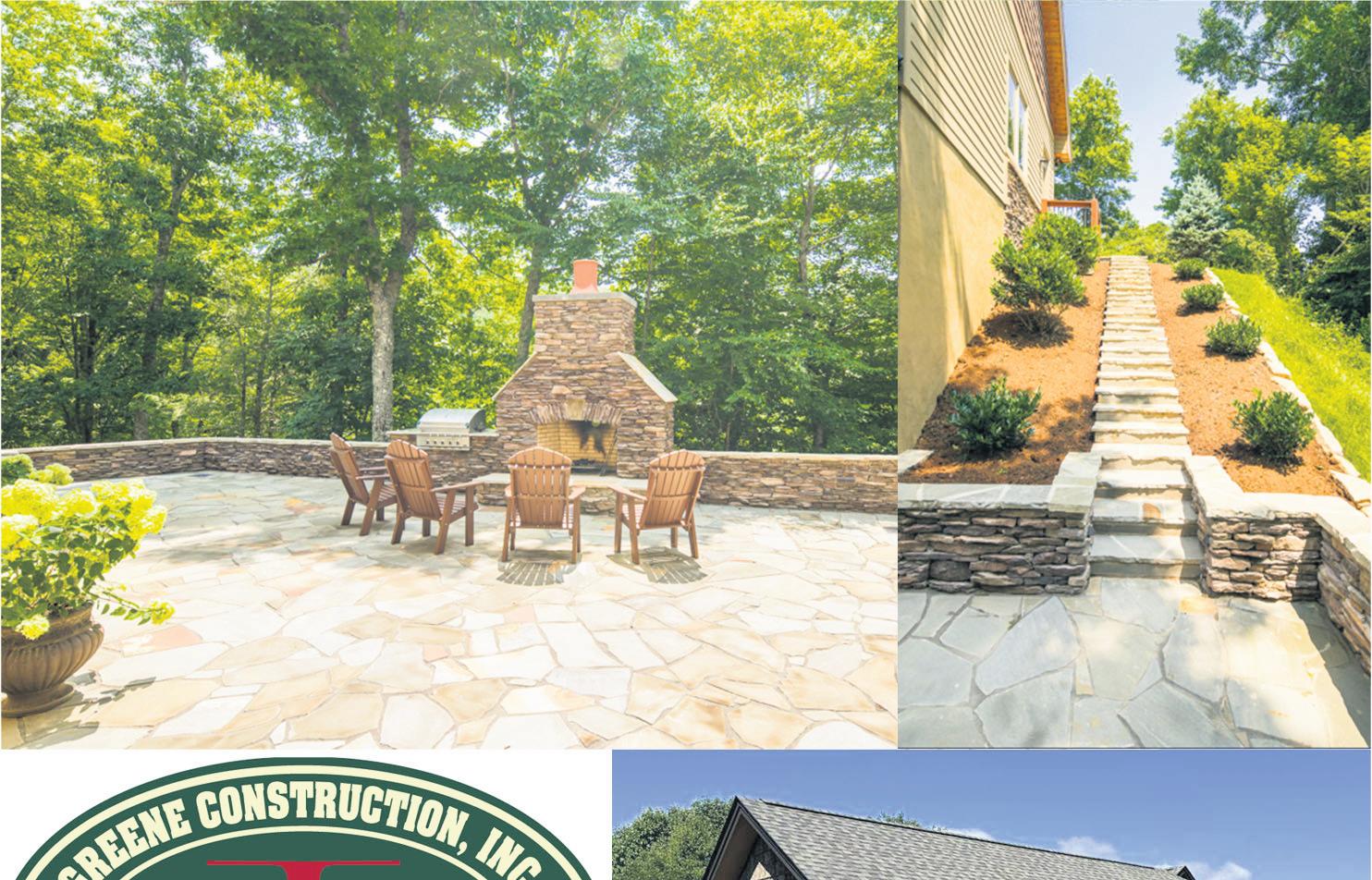


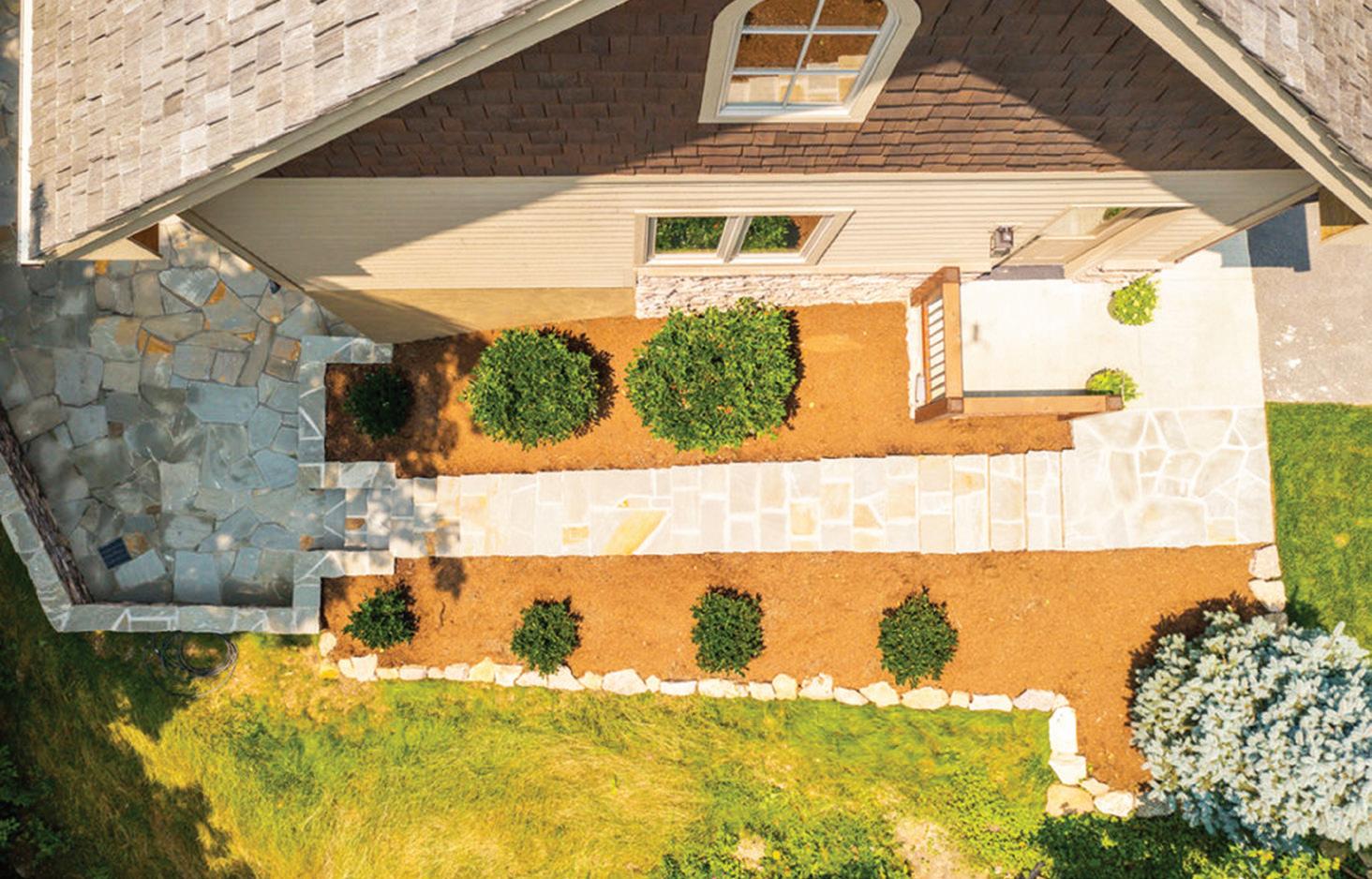
Converting an unfinished basement to a living area is one of the best returns on investment, with an estimated 86% of the project cost recovered when it’s time to sell, according to a remodeling impact report conducted by the National Association of Realtors (NAR).
“A basement is finished when the entire level is complete and similar to the upstairs living areas,” according to cidbasements.com.
“It generally includes an electrical system, heat, finished floors, an accessible entrance/ stairway, level ceilings and finished walls.”
Another option is to convert the attic into a livable space. Before converting the attic, consider its structural integrity, ventilation, and insulation; subflooring, plumbing,
and electricity should also be high on the list. According to atticsolutionsusa.com, the finished attic should follow the 7-foot rule. It
should be at least 7 feet tall and 7 feet wide from wall to wall.
The goal of a renovation is to improve a home’s appearance,

usability, and resale value, thespruce.com reports. According to the home improvement website The Spruce, the cost should range
between $15 and $60 per square foot, depending on the quality of materials used.
DIY demolition and insulation installment
are among the best ways to cut the cost of a project that requires a contractor. Leave the rest of the work up to a professional.

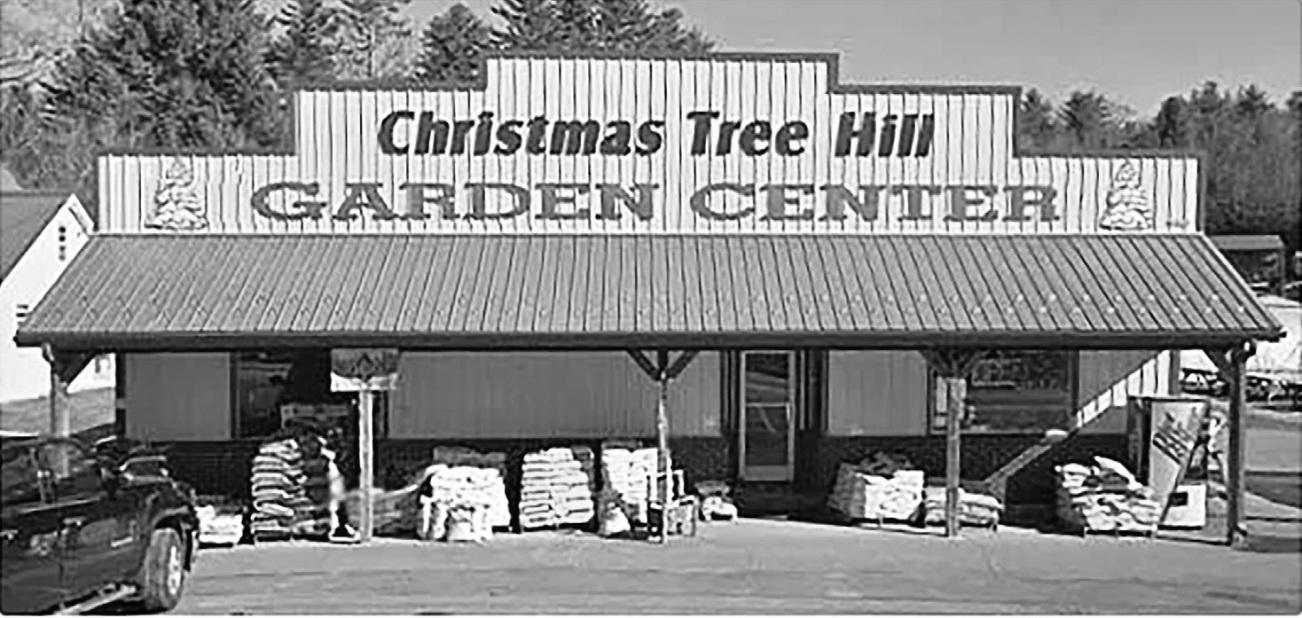




BY JERRY SNOW
Just like the nautical theme is common near the ocean, homes in the mountains draw inspiration from their majestic views and proximity to nature.
For a homeowner in the High Country, the view at dusk never gets old. Consider taking pride in your piece of the world as a gift to your neighborhood.
Landscaping is an opportunity to earn the curb appeal every homeowner seeks. Improving a home’s exterior is a commitment that requires a plan and upkeep.
Creating functional outdoor square
footage makes any home a better place to entertain family and friends.
The weather in the High Country is usually outdoor-friendly from Easter until Thanksgiving, and spring is a good time to rethink how to use the grounds. Plants and flowers are a good way to welcome visitors, and a combination of perennials and annuals is typical. Perennial plants regrow every spring, while annuals live for just one growing season. Perennials have the appeal of being nurtured over the years — almost like taking care of a pet.


Annuals tend to be vibrant and colorful, but their short shelf life is a downside. On the bright side, annuals represent a chance to start fresh every spring.
There are many services in the High Country that can help you start fresh
each spring, including Mustard Seed, Long Dog Lawn Care, Highland Landscape Supplies and Deeply Rooted Landscapes, just to name a few. Since 2017, Blue Ridge Women in














Agriculture has partnered with the Watauga and Ashe County Public Libraries to provide a catalog of fruit, vegetable, and flower seeds with a mission to promote food security, community resilience, a culture of sharing, and the expansion of locally acclimated seeds.
Seed libraries exist in communities across the country as a resource. In addition to increasing food security and access to produce, seed libraries can be an essential step in “developing a network of seed savers to create locally adapted varieties to respond proactively to climate change or loss of gene integrity due to GMOs or to preserve genetic diversity,”
according to the Public Library Association. When adding style to the property, a combination of rocks, plants, trees, shrubs, flowers, mulch, stone, brick, and gravel is a good option.
Add a fireplace or fire pit for grilling or gatherings to make your outdoor living space stand out.
Fire pits can be built with bricks, slate, or river rocks, and they can be done by anyone for a few hundred dollars or less.
Rustic or natural settings are a good choice in the mountains. Rusting farm equipment in a barn can be re-

purposed by a creative mind. It can bring character to a farmhouse.
Planting flowers around a rusting tractor or a fallen tree trunk can become a form of art.
An old truck tire, rope, and a sturdy tree can be converted into a homemade swing.
“Mountain modern is a design that combines contemporary materials like metals and glass with rustic elements found in nature, such as wood and stone,” wrote Pam Dooley on plantscreative. com.
Make the most of your land with creative landscaping ideas.
A hill can be a chore to mow or weed eat,


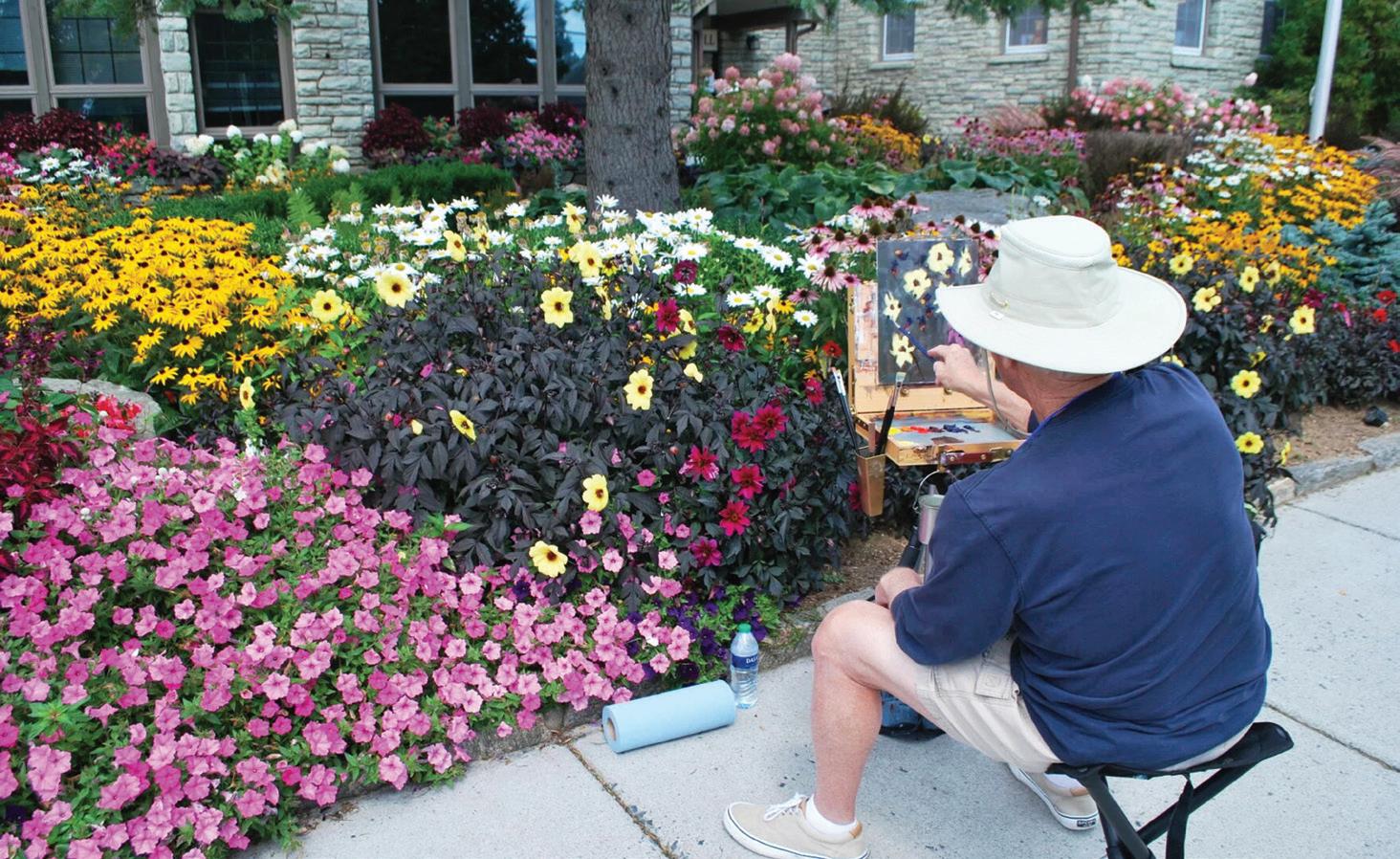
but it’s also a chance to build a waterfall, as long as the slope is at least 2 inches for every 10 feet of stream. The steeper the slope, the

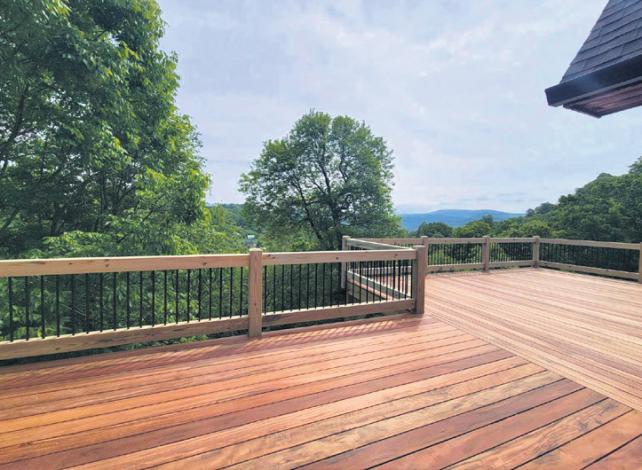


faster the waterfall will move. Try to build the waterfall or babbling brook within view of the deck or patio. An upper pool, lower basin and a pump are required, and it will have to be close enough to an electric source. A waterfall that has an incline of at least 10 inches per 10 feet of

stream is loud enough to drown out most street noise.
Some like to build a waterfall within earshot of their bedroom.
Rocks and stones of different sizes and shapes are ideal. Flat stones are needed for waterfalls.
The New River and surrounding creeks have many useful rocks for anyone trying to build a continuous waterfall or brook. Specific rock colors can be purchased.
The Family Handyman recommends that about a half-ton of gravel (1 to 2 inches in size) is needed for every 10 feet of stream.
Before digging for the project, call 811 several days ahead to mark the property so no underground utilities are damaged.
Building a water stream on your property will add character to the home and be a talking point for visitors. To find out information about waterfall and stream layouts, including the materials and tools needed, go to “Build a Backyard
Waterfall and Stream” at familhandyman.com.
Be conscious about what parts of the yard get the most sunlight, and ask a gardener how much daily sunlight a plant or flower needs before making it a part of the yard.
Well-positioned landscape lights with motion sensors will help

prevent nocturnal animals from munching on your garden’s plants and flowers.
Be strategic. Remember deer are looking for a buffet at night, and your garden could be their next
It is an empty feeling to wake up and discover your garden has been devoured while you slept. Plants that do not appeal to deer include upright yews, Abelia, and Illicium.








with an energy-efficient HVAC system!
Since heating and cooling account forabout half of the typicalhome’s energy costs, upgrading to ahighefficiency system is an effectiveway to improve your comfort AND savingsall year.
If you’re considering an upgrade, we canhelpwith a REBATEof$150 on the purchase of ahighefficiency heat pump or mini-split that’srated 16 SEER* or above.That’ssomething you’ll want to discuss with your HVAC contractortoensurethe SEER levelmeets thequalifications. In addition, youcould geta federaltax credit of up to 30%!
We also offer rebatesonenerg y-efficientappliances, weatherization items and more.
*Seasonal Energy EfficiencyRating
Getyour rebate and boost your $AVINGS at BlueRidgeEnergy.com/Rebates.Findinfoontax credits at BlueRidgeEnergy.com/TaxCredits.

Your current systemprobably needs replacing if:
•It’s10ormoreyears old
•You’re spending moneyonrepairs
•The indoor temp isn’t consistent throughout your home
•You’re experiencing humidityissues.
BY MOSS BRENNAN
To keep a safe home for your family, community members should test all smoke and carbon monoxide alarms and replace batteries in all these devices every year.
When the clocks change for Daylight Savings Time, it’s a good time to test and change the batteries, but it’s always a good idea to check them regularly to make sure they are working correctly.
According to the National Fire Protection Association, about three out of five fire deaths occur in homes without working smoke alarms.
According to the Boone Fire Department, smoke alarms are a key part of a home fire escape plan. Fires in modern homes burn hotter and faster than in the past, and a person may only have a few minutes to escape safely. When there is a fire, smoke spreads fast, and working smoke alarms can give an early warning to get outside quickly. It is also important to have a plan in place for a fire.
“It’s important for everyone to plan and practice a home fire escape. Everyone needs to be prepared in advance, so that they know what to do when the smoke alarm sounds. Given that every home is
different, every home fire escape plan will also be different,” said Jacob Burleson, Fire Prevention Captain. “Have a plan for everyone in the home. Children, older adults, and people with disabilities may need assistance to wake up and get out. Make sure that someone will help them.”
Install smoke alarms on every level of your home, inside bedrooms and outside sleeping areas on the ceiling or high on the wall
• Keep smoke alarms away from the kitchen, at least 10 feet from the stove, to reduce false alarms
• Use special alarms with strobe lights and bed shakers for people who are hard of hearing or deaf
• Test smoke alarms monthly
• Replace batteries in your smoke alarm and carbon monoxide detector annually
• Replace smoke alarms that are 10 or more years old
When a home has a working smoke alarm, the risk of dying in a house fire is cut in half, according to the NFPA. In addition to testing alarms and changing batteries, here are other tips to keep your home

safe in the event of a fire:
• Closed doors slow the spread of smoke, heat and fire. Sleep with bedroom doors closed. Install smoke alarms in every sleeping room and outside each separate sleeping area. Alarms should be installed on every level of the home, including the basement. In new construction, smoke alarms should be interconnected so that when one alarm sounds, they all sound.
• Large homes may need extra alarms.
• Test all alarms at least once a month. Press the test button to be sure the alarm is working.
• Smoke alarms should be on the ceiling or high on a wall. Keep smoke alarms away from the kitchen to reduce false alarms. They should be at least 10 feet away from the stove.
Keep your family safe with workingThere are special alarms for people who are hard of hearing and deaf.
Keep your family safe with workingReplace all smoke alarms when they are 10 years old. Writing the expiration date on the outside of the alarm will help you determine the replacement date from the ground without the need for ladders.
Keep your family safe with workingSome newer alarms have lifetime batteries. These detectors are more expensive but are a good choice for rooms with high ceilings. They will eliminate the need for tall ladders and labor expenses twice a year compared to conventional replaceable battery alarms. Alarms with replaceable batteries are disposed of and replaced when the alarm indicates the battery is dying.
Visit www.nfpa.org/ education or contact your local fire department to learn more about fire safety.





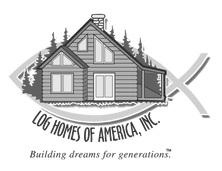






RAMHEAVY DUTY TRUCKS ARE #1 IN NEWVEHICLE QUALIT Y IN SEGMENT➋
RamHeavy Duty Truckshave been honored fortheir new-vehicle qualit y. Ram is thefirsttruck-onlybrandever to win#1inoverall initial qualit yaccording to J.D. Power